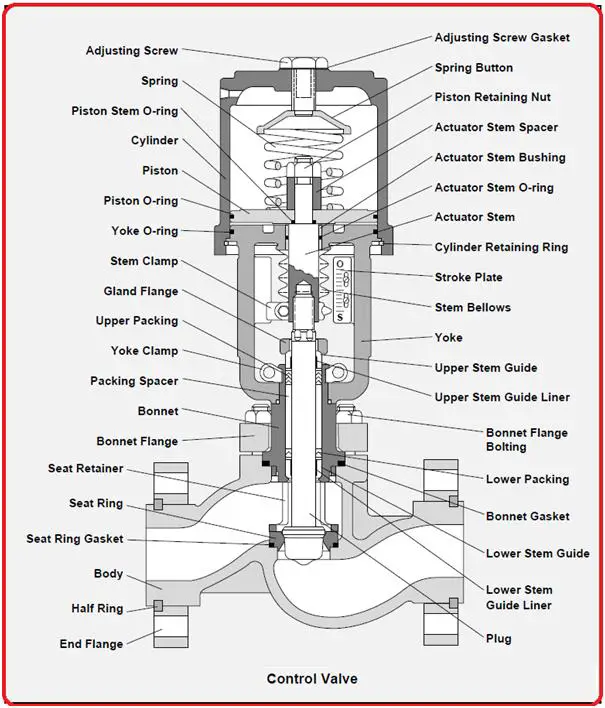Understanding the Value of Control Valves in Process Automation
Understanding the Value of Control Valves in Process Automation
Blog Article

Maximize Energy Savings and Comfort With Advanced Structure Automation Controls
In the realm of modern-day design and facility management, the assimilation of sophisticated structure automation manages stands as an essential advancement. By utilizing the power of automation, buildings can adapt, respond, and progress in ways that were as soon as inconceivable.
Power Effectiveness Conveniences
Energy performance benefits can considerably decrease energy usage and operational prices in buildings. Energy-efficient systems, such as innovative building automation controls, can maximize the usage of resources like home heating, lights, and cooling, leading to reduced power expenses over time.
Additionally, enhanced power effectiveness can prolong the life-span of building devices and systems. By running much more effectively, a/c systems, lighting fixture, and other structure elements experience less damage, resulting in reduced upkeep and replacement expenses. In addition, energy-efficient structures frequently command higher property worths and rental rates, giving long-lasting economic benefits to owners.
Additionally, energy performance can enhance occupant convenience and efficiency. Properly regulated interior settings with optimum illumination and thermal problems develop a more positive and helpful work area, resulting in improved worker fulfillment and efficiency. In general, the power performance advantages related to sophisticated building automation controls are diverse, including expense savings, environmental stewardship, and occupant health.
Boosted Convenience Control
Enhancing convenience control in building environments needs an innovative integration of advanced automation systems for optimal resident wellness. By making use of innovative building automation controls, facilities can tailor the interior atmosphere to fulfill the certain requirements and preferences of residents. control valves.
Improved comfort control goes beyond basic temperature level adjustments. It consists of features such as individualized settings, occupancy sensors, and natural light utilization to produce a receptive and vibrant setting. By including these sophisticated controls, structures can not only improve convenience however likewise boost power performance by maximizing system operations based upon real tenancy and usage patterns. Inevitably, focusing on resident comfort through advanced automation systems leads to an extra satisfying and healthier interior environment.
Functional Performance Improvements

Moreover, the execution of real-time surveillance and analytics devices enables building drivers to identify energy ineffectiveness and operational abnormalities promptly. By continually monitoring power usage patterns and system efficiency metrics, adjustments can be made in real-time to optimize energy intake and ensure peak functional efficiency. control valves. Furthermore, incorporating demand feedback techniques into building automation controls can better improve operational effectiveness by dynamically adjusting power use based on grid problems and prices signals
Indoor Environment Optimization
Reliable indoor environment optimization is an essential aspect of building automation controls, making certain residents' comfort and well-being while maximizing power cost savings. By utilizing advanced sensing units and controls, developing automation systems can constantly keep track of and readjust temperature, moisture degrees, air quality, and ventilation to create an optimum indoor setting. Keeping comfy and regular conditions not just enhances occupant fulfillment but also boosts efficiency and total wellness.
Interior environment optimization also plays a vital role in energy effectiveness. By fine-tuning heating, air flow, and air conditioning systems based upon real-time data and tenancy patterns, developing automation controls can significantly reduce energy consumption - control valves. Applying strategies such as demand-controlled ventilation and thermal zoning can help lessen power waste while guaranteeing that each area of the structure gets the essential conditioning.

Lasting Atmosphere Production
Building automation regulates not just maximize indoor climate conditions for power efficiency and passenger comfort however likewise lay the structure for creating a sustainable environment via calculated management of sources and systems. By integrating advanced structure automation technologies, such as sensors, actuators, and intelligent software, centers can check and readjust power usage in real-time to reduce waste and reduce their carbon footprint. These systems enable predictive maintenance, recognizing possible issues before they intensify and optimizing equipment efficiency his response to improve durability and effectiveness.
Furthermore, sustainable environment production prolongs beyond power management to incorporate water conservation, waste reduction, and indoor air high quality enhancement. find out here now Structure automation controls can regulate water usage, find leakages, and make certain proper garbage disposal methods, adding to total sustainability initiatives. Additionally, by managing and monitoring air flow and filtration systems, these modern technologies enhance owner wellness and productivity while reducing power intake related to cooling and heating operations.
Final Thought
In conclusion, advanced building automation regulates offer significant advantages in terms of energy cost savings, comfort control, functional performance, interior climate optimization, and producing a sustainable environment. By applying these controls, buildings can achieve ideal performance while decreasing energy intake and improving owner comfort. It is obvious that the use of sophisticated automation technology is important in enhancing building performance and developing a much more lasting future.
Power effectiveness benefits can considerably decrease energy intake and functional prices in buildings. In general, the energy effectiveness benefits associated with advanced structure automation controls are diverse, encompassing cost financial savings, ecological stewardship, and passenger wellness.
In addition, including need response strategies into structure automation controls can better boost Discover More Here operational efficiency by dynamically adjusting energy use based on grid conditions and pricing signals.
Structure automation controls not only enhance indoor environment conditions for power effectiveness and passenger convenience but additionally lay the foundation for producing a sustainable setting with strategic management of systems and sources.In conclusion, advanced building automation manages offer considerable advantages in terms of energy cost savings, comfort control, functional efficiency, interior climate optimization, and developing a sustainable environment.
Report this page